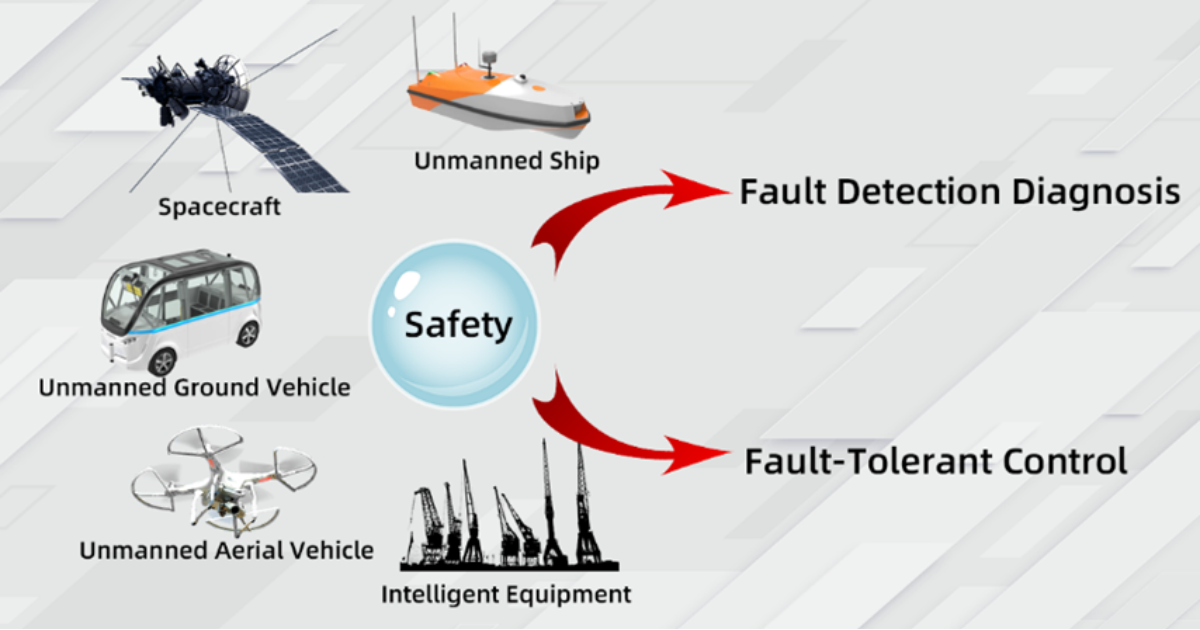Topic Menu
► Topic MenuTopic Editors
Perspectives in Fault Diagnosis and Fault Tolerant Control

Topic Information
Dear Colleagues,
Many highly complex unmanned autonomous systems (e.g., unmanned aerial vehicles, unmanned ground vehicles, unmanned surface vehicles, unmanned underwater vehicles, unmanned airships, unmanned aerial manipulators, satellites, spacecraft systems), intelligent equipment systems, and high-precision components have been developed to improve task execution efficiency. The increased complexity renders these systems and components susceptible to faults, which may significantly degrade the operational performance or even cause catastrophic accidents. Even though fault detection and diagnosis (FDD) and fault-tolerant control (FTC) strategies have been widely investigated to estimate and attenuate the adverse effects caused by faults, FDD and FTC investigations have still faced major challenges with increasing safety requirements. Many new factors now have to be considered that have not yet been addressed. Therefore, the aim of this Topic is to bring together original research articles and review articles in the field of FDD and FTC technology and promote related techniques in the proposed areas.
This Topic provides a platform for worldwide researchers to present their research works related to the theory and practical applications for FDD and FTC. Topics of interest include but are not limited to the following:
- Model-based FDD design;
- Data-driven FDD design;
- Intelligent FDD design;
- Condition monitoring;
- Prognostics and health management;
- FTC design against various constraints;
- Intelligent fuzzy/neural/neural fuzzy adaptive FTC design;
- Adaptive reinforcement learning for FTC;
- Fractional-order FTC;
- Fault-tolerant guidance and control;
- Integrated design of FDD and FTC;
- Safe control of systems against actuator, sensor, communication attacks, etc.
Dr. Ziquan Yu
Prof. Dr. Youmin Zhang
Topic Editors
Keywords
- fault detection and diagnosis
- system identification
- fault detection and isolation
- condition monitoring
- prognostics and health management
- fault-tolerant control
- safe and reliable control
- intelligent control
- consensus control
Participating Journals
| Journal Name | Impact Factor | CiteScore | Launched Year | First Decision (median) | APC |
|---|---|---|---|---|---|

Aerospace
|
2.6 | 3.0 | 2014 | 22.3 Days | CHF 2400 |

Applied Sciences
|
2.7 | 4.5 | 2011 | 16.9 Days | CHF 2400 |

Drones
|
4.8 | 6.1 | 2017 | 17.9 Days | CHF 2600 |

Machines
|
2.6 | 2.1 | 2013 | 15.6 Days | CHF 2400 |

Sensors
|
3.9 | 6.8 | 2001 | 17 Days | CHF 2600 |

Actuators
|
2.6 | 3.2 | 2012 | 16.7 Days | CHF 2400 |

Automation
|
- | - | 2020 | 26.3 Days | CHF 1000 |

Vibration
|
2.0 | 3.5 | 2018 | 21.3 Days | CHF 1600 |

MDPI Topics is cooperating with Preprints.org and has built a direct connection between MDPI journals and Preprints.org. Authors are encouraged to enjoy the benefits by posting a preprint at Preprints.org prior to publication:
- Immediately share your ideas ahead of publication and establish your research priority;
- Protect your idea from being stolen with this time-stamped preprint article;
- Enhance the exposure and impact of your research;
- Receive feedback from your peers in advance;
- Have it indexed in Web of Science (Preprint Citation Index), Google Scholar, Crossref, SHARE, PrePubMed, Scilit and Europe PMC.



